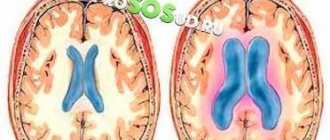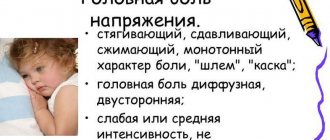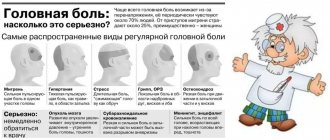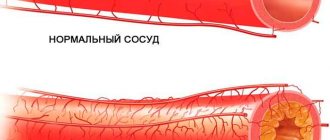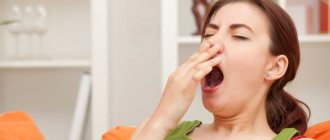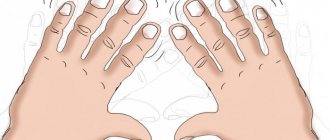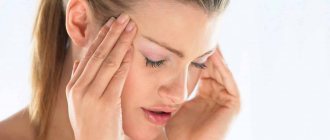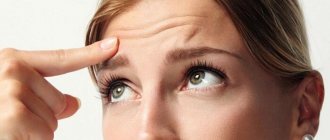Headache, or cephalgic syndrome, is a frequent companion to sinusitis. Doctors associate it with general intoxication due to infection of the body and pressure from inflamed sinuses. The tissues of the head are compressed, blood circulation becomes difficult, and swelling occurs. Cephalgia is especially severe in the morning, when bending over. With a large accumulation of pus, a feeling of compression of the occipital region appears.
Headache due to sinusitis is recognizable by its location: areas adjacent to the internal parts of the nose are most often affected. It is possible to get rid of unpleasant sensations with the help of analgesics for a short time, the pain returns with renewed vigor. It is often confused with migraine, and they try to treat it with some kind of medication. But self-medication can lead to serious complications. Only a doctor can determine the true cause of a headache based on research.
Causes of headaches with sinusitis
The maxillary cavities are the internal cavities of the nose located under the eyes. They are lined with mucous membrane. When it becomes inflamed for some reason, the cells begin to produce a thick purulent secretion. It is difficult to pass naturally through the nasal passages, accumulates inside the cavity, and pathogenic microorganisms develop in large quantities. As a result, sinusitis occurs. The nature of the diseases can be different, the main reasons are:
- infection of the nasal mucosa by viruses, microbes, pathogenic fungi;
- complication of an untreated runny nose that occurs during ARVI;
- allergic reaction to irritants;
- weakened immunity after illness or surgery;
- accumulation of nasal secretions in the sinuses due to septal deformation, regardless of whether it is congenital or acquired;
- physiological narrowing of the nasal passages;
- severe hypothermia of the body;
- abnormal secretory function of the nasal mucosa against the background of the influence of harmful factors of an industrial and domestic nature (dust, gas pollution, tobacco smoke, toxic particles);
- long-term use of vasoconstrictor nasal medications (sprays, drops);
- diseases of the oral cavity due to improper care and caries;
- pathological proliferation of nasal tissue (adenoids, polyps, tumor formations);
- high dose of radiation;
- too low air humidity in the apartment - the mucous membrane dries out, dry crusts and pockets of inflammation appear;
- chronic diseases of the larynx, upper respiratory tract, frequent sinusitis, rhinitis.
Prevention
Preventive measures are simple. You just need to follow these rules:
- Avoid crowds of people during the height of infectious diseases. If you still couldn’t avoid ARVI and catch the flu, then you shouldn’t try to endure the disease “on your feet.” The cure must be complete.
- If you have a tendency to get frequent colds, you need to get vaccinated in a timely manner 3-4 weeks before the onset of influenza epidemics. Read more about flu vaccination – benefits and harms, as well as popular medications here.
- Use vasodilators for a runny nose, but no more than five days, as addiction occurs.
- Visit the dentist at least twice a year to treat any carious cavities that have formed.
- The temperature in living and working areas should be comfortable with normal relative humidity. The air should not be dry.
- If there is an injury to the nose or forehead, visit an otolaryngologist. A deviated septum can lead to constant aching pain and sinusitis.
- In winter, you cannot walk without a hat. The hat should be deep and cover the forehead.
- If your sinusitis is of an allergic nature, then eliminate the allergens around you.
Antibiotic Azithromycin: indications for use and recommendations
The causes of constant nasal congestion without and with a runny nose are described in this article.
Differences between migraine and sinusitis symptoms
Headaches due to sinusitis are sometimes not given due attention. It is often considered a migraine caused by psycho-emotional overload. Often, headaches are relieved with all kinds of painkillers, which aggravate the course of sinusitis and delay the recovery process.
Migraine symptoms occur as severe, pulsating attacks throughout the entire head or on one side. They appear from irritants: sharp sounds, bright light, smell.
How does a headache hurt with sinusitis?
Cephalgia manifests itself when the nose is blocked. After the thick mucus leaves, temporary relief occurs. In the morning the patient feels worse, this is explained by the accumulation of nasal secretions in the maxillary sinuses. After vasoconstrictor drugs, the swelling of the mucous membrane subsides, and sometimes cephalgia disappears completely.
Main symptoms of sinusitis:
- the feeling of heaviness in the back of the head increases when tilting or sharply turning the head to the side;
- pulsation occurs in the area of the maxillary sinuses, pain appears in the bridge of the nose.
Analgesics only dull the pain, they do not completely eliminate the severity;
- the pain is of a pressing nature, spreading from the bridge of the nose to the temple area;
- with unilateral sinusitis, pain is characteristic only on one side;
- general intoxication of the body is observed.
Where and how a headache occurs with sinusitis largely depends on the course of the disease. In the acute form, the temperature rises, the area in the maxillary sinuses swells, and the sclera may become red, as if from irritation. What else hurts with sinusitis:
- eyeballs – it hurts to press them with your hands;
- muscles in the area of the nose, pulsation appears in the maxillary sinuses;
- aches and pains periodically occur in the bridge of the nose;
- the sensitivity of the frontal areas in the area of the superciliary arches is exacerbated;
- when the facial muscles contract, an unpleasant feeling of excessive stretching appears;
- Toothache often occurs - due to inflammation, it can be painful to press on the gums;
- Sometimes headaches are accompanied by lumbago in the ears, this is due to swelling of the middle ear.
When the disease becomes chronic, the following symptoms may occur:
- prolonged sinusitis;
- redness of the larynx;
- constant painful sensations in the throat;
- heaviness in the area of the eyes and forehead, especially when pressed.
If anatomically the teeth grow in such a way that their roots extend into the area of the maxillary sinus, a sharp toothache is possible.
With sinusitis, vision deterioration and a complication in the form of conjunctivitis are possible. Due to the inflammatory process, bad breath occurs and a layer of yellow plaque appears on the tongue.
How to detect sinusitis at home?
What are the first signs of sinusitis in adults? Symptoms often include headaches and nasal congestion. Doctors are of the opinion that it is impossible to independently diagnose yourself at home without a thorough medical diagnosis. It is recommended to visit an ENT specialist and inform him about all the unpleasant symptoms that caused discomfort. Thanks to instrumental and laboratory research, the presence or absence of sinusitis is determined.
By analyzing the signs and symptoms of sinusitis in adults, which cause discomfort to the patient, it is impossible to make an accurate diagnosis. X-ray is the main diagnostic measure. If sinusitis is suspected, X-rays can be used to identify abnormal thickening of the sinus mucosa and to see possible tumors. The doctor determines the volume of accumulated substance in them by the size of the darkening in the image.
- Computed tomography is performed if, after an x-ray, the specialist does not receive enough information to make a diagnosis. This is one of the most accurate and informative diagnostic methods that helps assess the condition of the sinuses.
- By analyzing the results of a general blood test, the doctor determines the level of leukocytes and erythrocyte sedimentation rate, which indicates inflammation.
Sinusitis without symptoms in an adult is possible but rare. In the chronic form of the disease, only minor discomfort occurs, which resembles a runny nose. Thanks to bacterial culture analysis, it is possible to detect the presence of harmful microorganisms in the maxillary sinus. Using this analysis, the doctor will determine the causative agent of the infectious disease and analyze the sensitivity of the pathogen to a specific drug. An invasive technique is used if the disease is too advanced and there is a high risk of complications.
How to overcome a headache?
To eliminate cephalalgia caused by sinusitis, it is necessary to find the source of inflammation. For this purpose, radiation studies are carried out. The x-ray clearly shows where large accumulations of mucus are located; they are the cause of cephalgic syndrome. As an emergency measure, before consulting a doctor, you can take Ibuprofen - it will relieve pain and ease your general condition. At elevated temperatures, Paracetamol is recommended.
Severe pain from sinusitis can be effectively relieved by painkillers such as Ketonal with the active ingredient ketoprofen. These are triple-action drugs, they stop the inflammatory process, reduce temperature, and relieve pain.
But it makes no sense to treat cephalalgia separately from sinusitis. Only by eliminating the disease can you completely get rid of unpleasant symptoms. When the diagnosis is established, the otolaryngologist develops a therapeutic complex. Drug treatment of sinusitis involves taking the following medications:
- non-steroidal anti-inflammatory drugs, they are necessarily prescribed for elevated temperature, acute form of the disease;
- antihistamine sprays or tablets that eliminate irritation of the mucous membrane during allergic manifestations;
- vasoconstrictors that relieve swelling and facilitate the mastered discharge of mucus;
- medications that have a mucolytic effect, diluting the produced nasal secretions.
At high temperatures, antipyretic drugs are prescribed. The therapeutic regimen is recommended by the doctor. Each medicine has restrictions and contraindications; it is not safe to take them at your own discretion.
Directions of treatment
It is better to get rid of sinusitis in a comprehensive manner. In addition to taking medications, they use traditional methods and physiotherapy. In extreme cases, when the accumulation of mucus cannot be eliminated naturally, surgical intervention is required - the festering secretion is forcibly removed using a syringe.
The course of the disease largely depends on its cause; it can be of a different nature:
- infectious nature;
- physiological;
- allergic;
- hereditary;
- mechanical;
- medicinal.
This is taken into account by the doctor when developing therapy in several areas simultaneously.
Physiotherapeutic treatment
Hardware healing is considered a gentle and effective method of getting rid of sinusitis and headaches:
- UHF improves blood circulation in inflamed tissues. Filtration of lymph and disposal of breakdown products is accelerated due to the restoration of the permeability of cell membranes;
- electrophoresis provides deep warming and saturation of lesions with drugs. After it, the headache immediately subsides due to the localization of the inflammatory process and the activation of the natural discharge of stagnant mucus;
- ultraviolet treatment of the nasal mucosa reduces the population of pathogenic microorganisms, dries out the mucous membrane, and increases immunity due to the formation of vitamin D in the tissues;
- ultrasound provides deep massage of the nasal sinuses, improves metabolic processes, relieves the feeling of constriction, activates the production of liquid nasal secretion, it dilutes stagnant secretions, its evacuation is carried out naturally;
- Magnetic therapy reduces blood pressure due to the vasoconstrictor effect, relieves cephalgic syndrome, and the headache stops hurting after several procedures.
Puncture for sinusitis
If there is a large accumulation of pus, an increased density of secretions, or narrowed nasal passages, using special instruments or syringes with bone needles, a hole is made to evacuate the purulent masses. The puncture is performed through the nose in a treatment room under local anesthesia. The sinuses are treated with antiseptic solutions - they are pumped in in large volumes, the effect of rinsing is noticeable immediately:
- the feeling of tightness disappears;
- the temperature drops;
- nasal breathing is restored;
- the nasal tone disappears.
Types of complications and harm of self-medication
If you have sinusitis, visiting a doctor is considered mandatory; this will help avoid serious complications:
- meningitis;
- tooth loss;
- osteoperiostitis (inflammation of bone tissue).
Self-administration of drugs is also fraught with harmful consequences. Allergic reactions may occur, side effects and toxic lesions may appear. Why self-medication is dangerous:
- Taking the wrong medications can lead to a complete loss of smell;
- long-term use of vasoconstrictor drugs provokes medicinal rhinitis;
- changes in the structure of the mucosa contribute to the development of infections;
- If the cause of headache due to sinusitis is not eliminated, an inflammatory process may develop and spread to the brain.
Only the correct selection of drugs ensures the effectiveness of treating headaches with sinusitis without serious consequences.
conclusions
A headache with sinusitis occurs when the nasal mucosa swells and prevents the resulting pus from leaving the maxillary sinuses. To cure a headache, you must treat the cause itself - sinusitis. This disease is treated with medications. Their choice is quite large and the doctor attributes them mainly in combination. There are also several folk methods and remedies that will help alleviate suffering. But with this disease, self-medication is unacceptable. Too serious complications. Therefore, at the first symptoms you should consult a doctor. Also, do not forget to carry out timely prevention to avoid its transition to the chronic stage.
Source


